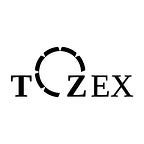The financial world is on the brink of a transformative era, as traditional investment forms merge with the innovative blockchain technology. One of the cutting-edge solutions altering the game is tokenized bonds, an accessible and flexible investment method based on asset tokenization.
Let’s explore how the integration of blockchain can increase accessibility, efficiency, and adaptability of bond investments for the digital age.
Traditional Bonds Explained
Traditional bonds are fixed-income instruments, issued by organizations like big corporations and governments in the form of securities to raise funds. Purchasing a bond, investors lend money to these entities in exchange for regular interest payments and the principal amount at maturity. Bonds are typically offered for sale through financial organizations and are known for their dependability and steady yields.
What’s the size of the global bond market?
According to the Bank of International Settlements, in 2022, the global bond market amounted to $133 trillion, with China and the US accounting for 55% of the global bond market.
Traditional Bonds vs. Tokenized Bonds
Tokenized bonds represent a shift from traditional bonds by leveraging blockchain technology.
Bond tokenization involves converting the financial rights associated with a bond into a digital token on a blockchain. Each token represents a portion of the bond’s value, making it easier to buy, sell, and trade. The process utilizes smart contracts to automate interest payments and enforce the terms of the bond, ensuring compliance and security. This setup not only reduces administrative overhead but also opens the bond market to a broader audience by lowering entry barriers.
This shift to tokenized bonds introduces several advantages:
Increased Liquidity: Tokenized bonds can be divided into smaller units, allowing investors to buy fractions of a bond, thus lowering the investment threshold and increasing market liquidity.
Enhanced Transparency: The use of blockchain ensures that all transactions are recorded on a decentralized ledger, providing greater transparency over bond ownership and transfers.
Streamlined Processes: Smart contracts automate many of the processes involved in bond issuance and management, such as interest payments and compliance checks, reducing the need for intermediaries and lowering costs.
Examples of Tokenized Bonds
Numerous major banks and capital markets are catching up on this new tendency. Some of the banks that launched issuance platforms for tokenized bonds include Societe General Forge, Goldman Sachs, HSBC, UBS and BNP Paribas.
Stock exchanges and central securities depositories (CSDs) are also involved. The SIX Digital Exchange was the first to launch a regulated digital CSD and secondary market. Also producing the biggest bond issuance so far — a CHF 375 Million UBS bond.
Siemens issued its first digital bond on the Polygon blockchain, highlighting the seamless integration of blockchain for efficient transaction processing.
Another example of the tokenized bonds already in action is the Hong Kong Government’s Tokenized Green Bond. Hong Kong’s government issued a $100 million tokenized green bond based on Goldman Sachs’ tokenization protocol, GS DAP.
Final Words: What’s Next?
As blockchain technology matures, the bond tokenization is here to redefine the landscape of financial securities.
Tozex supports this revolution, offering a multiple tokenization tool (token issuance, management, bridge and multisignature vault) that not only supports tokenization but also ensures compliance, security, and interoperability. The future of bond investing is here, making it simpler and more efficient for investors around the globe to participate in the bond market.
